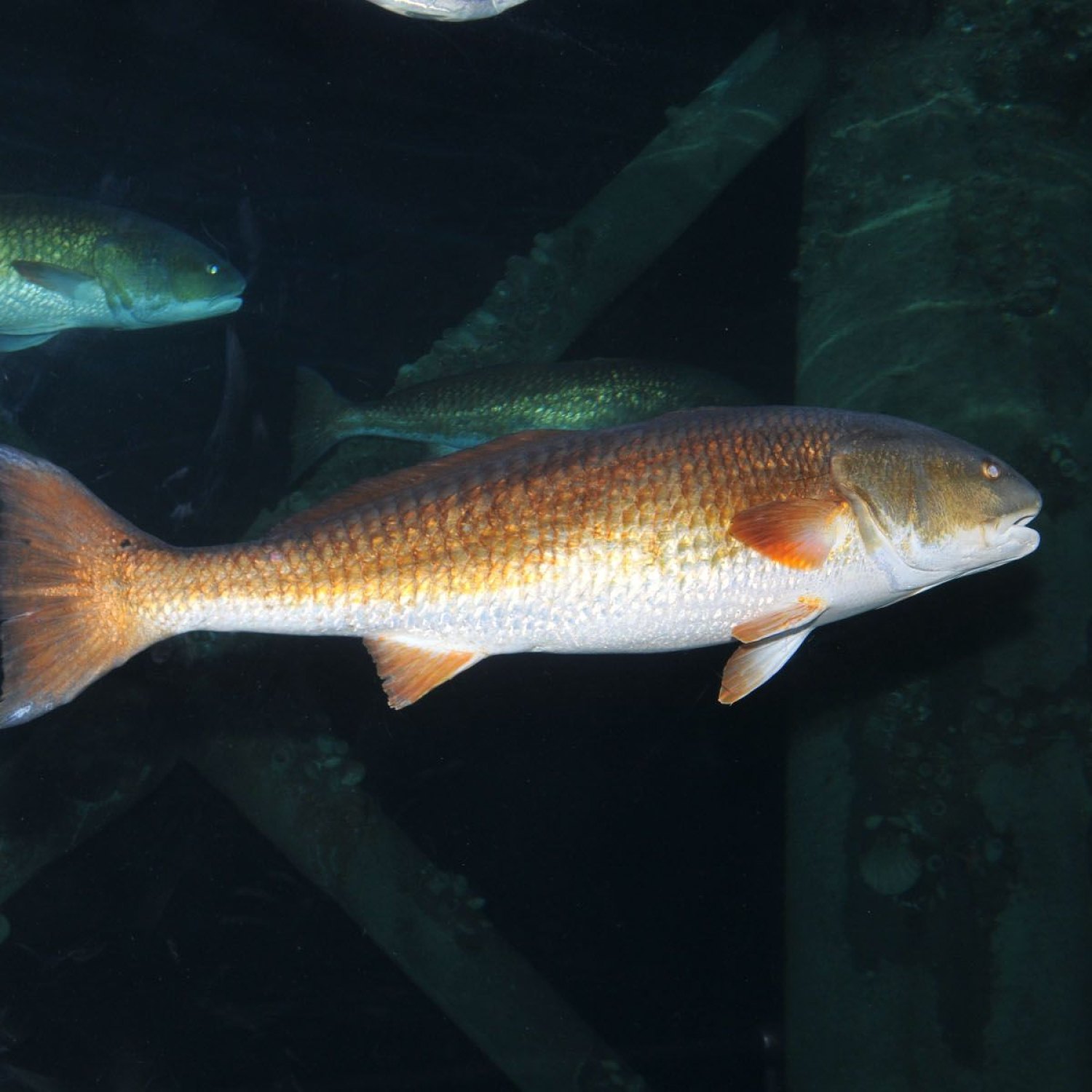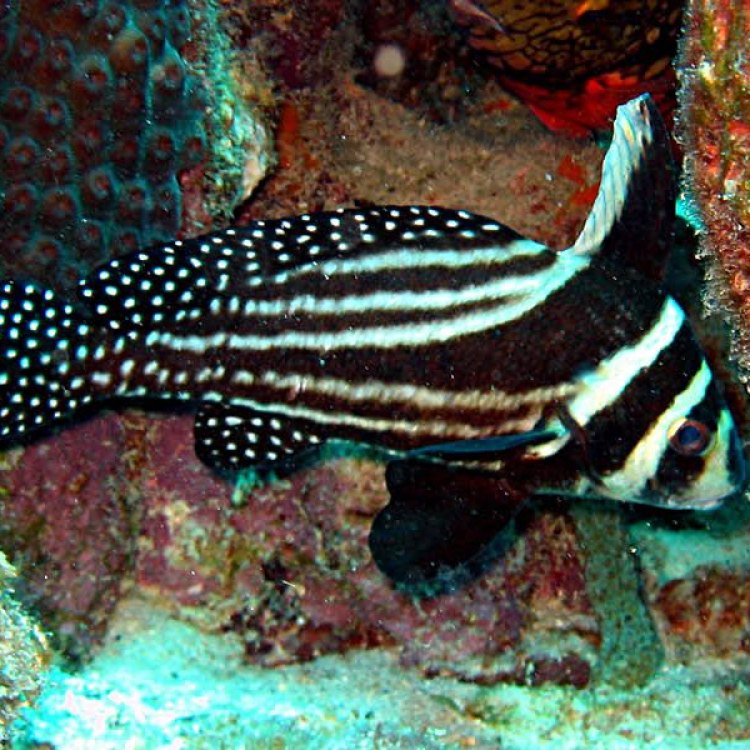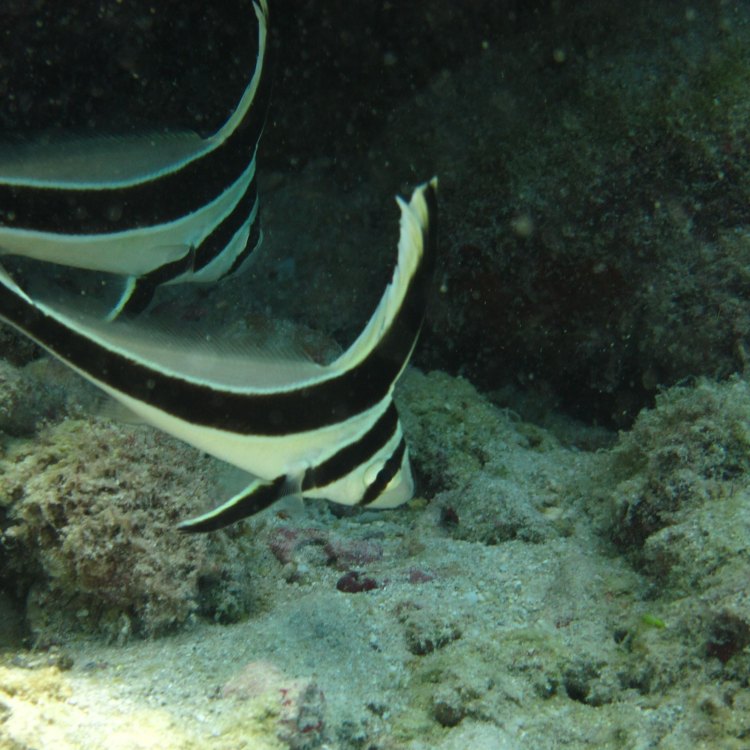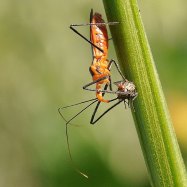
Drum Fish
Varies depending on the species, typically 1-5 feet long
Drum Fish, species with varying lengths of 1-5 feet, are commonly found in coastal regions worldwide. Belonging to the Sciaenidae family, these streamlined and slender creatures are well-known for their loud drumming sounds. Keep an eye out for these fascinating fish during your next trip to the beach! #DrumFish #CoastalAnimals #Sciaenidae
Animal Details Summary:
Common Name: Drum Fish
Kingdom: Animalia
Habitat: Coastal waters, estuaries, and rivers
The Fascinating World of the Drum Fish: A Predatory Beauty in the Coastal Waters
The world beneath the waves is a mysterious and captivating place, filled with an abundance of species waiting to be discovered. One such creature is the drum fish, a predatory beauty that glides through the coastal waters, estuaries, and rivers with ease. Its scientific name is Sciaenidae, but it is commonly known as the drum fish due to its unique drumming sound. Let's dive deeper into the world of this fascinating fish and uncover its remarkable features Drum Fish.The Taxonomy of the Drum Fish
The drum fish belongs to the animal kingdom, specifically the phylum Chordata. It is a member of the class Actinopterygii, which consists of ray-finned fishes. Within this class, the drum fish falls under the order Perciformes, which includes over 41% of all fish species. Its family is also called Sciaenidae, which is derived from the Greek word "sciaena," meaning "to produce sound." This refers to the drumming sound that they produce with their swim bladders.Habitat and Distribution
Drum fish populations can be found in the Atlantic, Pacific, and Indian Oceans, making them a widely distributed species. Their unique ability to adapt to different environments allows them to thrive in various habitats, such as coastal waters, estuaries, and rivers. They can also be found in both freshwater and saltwater bodies, depending on the species. This versatility in habitat is one of the reasons for their widespread distribution Danios.An Impressive Predator
The drum fish is a predatory fish that uses its keen senses to hunt for prey. They have a large mouth with sharp teeth, allowing them to easily catch and swallow their prey whole. They are also excellent swimmers, able to reach high speeds to catch their prey. Additionally, their streamlined and slender body shape enables them to maneuver through the water with precision, making them efficient hunters.Country of Origin and Geographical Location
The drum fish is found in coastal regions all around the world, making it challenging to pinpoint a specific country of origin. However, it is worth noting that different species of drum fish can be found in different regions. For example, the Sciaenops ocellatus is commonly found in the western Atlantic, while the Plagioscion squamosissimus is native to South America. This global spread of drum fish species highlights their adaptability and resilience in various environments.The Colorful World of the Drum Fish
The physical appearance of drum fish varies greatly, depending on the species. However, most drum fish have a gray or silvery coloration, which allows them to camouflage themselves in the water. This coloration also helps them blend in with their environment, making it easier for them to ambush their prey. Some species may also have stripes or spots on their body, enhancing their camouflage and making them even more beautiful to behold.A Variety of Sizes
When it comes to size, the drum fish does not disappoint. The average length of a drum fish ranges from 1 to 5 feet, depending on the species. However, some larger species, such as the red drum, can reach lengths of up to 5 feet and weigh up to 90 pounds. On the other hand, the silver perch, a smaller species, usually attains a length of 8-10 inches and weighs only a few pounds. The diversity in size among different species of drum fish is remarkable, showcasing the range of possibilities within this species.Behavioral Traits of the Drum Fish
The drum fish is a nocturnal species, meaning they are most active at night. During the day, they usually hide in the sand or among rocks, waiting to emerge at night and hunt for food. They are also social creatures, often found in small groups or schools. One of the most intriguing behaviors of the drum fish is its ability to produce low-frequency sounds by beating on their swim bladders. This drumming sound can travel up to several hundred meters underwater and is used for communication, especially during spawning season.Thriving in Changing Environments
The drum fish is known for its ability to adapt to changing environments. Unlike some other species of fish that require specific conditions to thrive, the drum fish can survive in varying water temperatures and salinity levels. This adaptability has allowed them to thrive and survive in an ever-changing world, despite factors such as climate change and human intervention.The Importance of the Drum Fish in the Ecosystem
The drum fish plays a crucial role in the ecosystem, both as a predator and as prey. As predators, they help maintain the balance of smaller fish populations, ensuring a healthy ecosystem. As prey, they provide an abundant food source for larger fish and marine mammals. Additionally, drum fish also contribute to the economy, with their commercial and recreational value as a food source and game fish.In Conclusion
From its diverse distribution and adaptability to its predatory nature and unique drumming ability, the drum fish is a fascinating species that deserves recognition and appreciation. As an integral part of the marine ecosystem and a source of wonder and amazement, we must do our part in conserving and protecting this beautiful fish and its diverse species. The world beneath the waves is full of hidden treasures, and the drum fish is undoubtedly one of them.

Drum Fish
Animal Details Drum Fish - Scientific Name: Sciaenidae
- Category: Animals D
- Scientific Name: Sciaenidae
- Common Name: Drum Fish
- Kingdom: Animalia
- Phylum: Chordata
- Class: Actinopterygii
- Order: Perciformes
- Family: Sciaenidae
- Habitat: Coastal waters, estuaries, and rivers
- Feeding Method: Predatory
- Geographical Distribution: Atlantic, Pacific, and Indian Oceans
- Country of Origin: Varies depending on the species
- Location: Coastal regions worldwide
- Animal Coloration: Varies depending on the species, typically gray or silvery
- Body Shape: Streamlined and slender
- Length: Varies depending on the species, typically 1-5 feet long

Drum Fish
- Adult Size: Varies depending on the species, typically 1-5 feet long
- Average Lifespan: Varies depending on the species, typically 10-30 years
- Reproduction: Sexual
- Reproductive Behavior: Varies depending on the species
- Sound or Call: Some species produce drumming sounds with their swim bladders
- Migration Pattern: Varies depending on the species
- Social Groups: Varies depending on the species
- Behavior: Nocturnal or diurnal depending on the species; often form schools
- Threats: Overfishing, habitat degradation, pollution
- Conservation Status: Varies depending on the species
- Impact on Ecosystem: As predators, drum fish play a role in maintaining balanced ecosystems
- Human Use: Fishing for sport and food
- Distinctive Features: Drumming sound production, large scales, elongated bodies
- Interesting Facts: Some species of drum fish can produce low-frequency sounds that can be heard underwater for long distances.
- Predator: Varies depending on the species

Sciaenidae
The Unique and Fascinating Drum Fish: Underwater Drummers of the Sea
The ocean is full of amazing and diverse creatures, and one fish that stands out among the rest is the drum fish. With its distinctive features, unique behaviors, and vital role in the ecosystem, the drum fish is a fascinating species that deserves our attention.Drum fish are a diverse group of fish found in various marine habitats, from shallow coastal waters to the depths of the ocean. There are over 200 species of drum fish, all belonging to the Sciaenidae family PeaceOfAnimals.Com. These fish are found in all major oceans and seas, with the most diversity found in the Indo-Pacific region.
The name “drum fish” may sound unusual, but it comes from the peculiar sound they produce, resembling a drumming beat. Let’s dive deeper into the world of drum fish and discover what makes them so unique.
The Physical Characteristics of Drum Fish
As mentioned earlier, drum fish are diverse in size, with species ranging from 1 to 5 feet in length. Some of the largest species can weigh up to 110 pounds, making them quite a catch for sport fishing enthusiasts.One of the most distinctive physical features of drum fish is their large scales. These scales are thick, bony, and often brightly colored, making drum fish stand out in the water. Another striking feature of these fish is their elongated bodies, giving them a sleek appearance.
While their general body shape and size may vary, one thing remains constant in all drum fish – their ability to produce drumming sounds Diminutive Woodrat.
Drum Sounds – An Exceptional Behavior
Drum fish have an incredible talent – they can produce drumming sounds with their swim bladders. These sounds are produced by contracting and relaxing the muscles surrounding the swim bladder, creating vibrations that are amplified by the fish’s body.Different species produce varying sounds, but all can be heard underwater for long distances. This sound production is integral to the behavior and communication of drum fish. Some species use it to communicate with their mates, while others use it as a means of defense.
Interestingly, drum fish can also detect and locate their prey through sound, making sound production a crucial aspect of their survival.
The Reproduction of Drum Fish
Like most fish, drum fish reproduce sexually. The reproductive behavior of these fish differs among species, with some spawning in shallow coastal waters, while others spawn in deeper offshore areas.During their reproductive season, male drum fish often use their drumming sounds to attract female mates and defend their territory against rival males. After mating, female drum fish release eggs into the water, where they are fertilized by male sperm.
The eggs then hatch into larval fish, which eventually grow and develop into adult drum fish. Depending on the species, the lifespan of drum fish can range from 10 to 30 years.
The Social Behavior of Drum Fish
The social behavior of drum fish varies depending on the species. Some species are solitary, while others form schools. Within these schools, hierarchy and dominance exist, with larger and stronger fish asserting their dominance over smaller ones.Some species of drum fish are also known to exhibit nocturnal behavior, being active at night and resting during the day. Other species are diurnal, being active during the day and resting at night.
These social behaviors play an essential role in the survival and reproduction of drum fish, as it allows them to communicate, attract mates, and protect themselves from potential threats.
The Threats Facing Drum Fish
Drum fish are facing multiple threats, mainly due to human activities. Overfishing is one of the significant threats to drum fish populations, especially in areas where they are commercially important. Habitat degradation and pollution also pose a significant threat, as it affects the quality and availability of their habitat.As predators, drum fish play a vital role in maintaining balanced ecosystems. But with their declining numbers, this could have adverse effects on other marine life and the environment as a whole.
The Conservation Status of Drum Fish
The conservation status of drum fish varies among species, with some considered critically endangered, while others are considered of least concern. Several factors, such as their habitat, reproduction rate, and population status, determine the conservation status of each species.To protect and conserve drum fish, regulations and laws have been put in place in many countries, limiting fishing activities and promoting sustainable fishing practices.
The Human Use of Drum Fish
Humans have been using drum fish for both sport and food for many years. The low-frequency sounds produced by some species have also been used by fishermen as a means of detecting the presence of these fish underwater.The drum fish’s large size and fighting spirit make them a popular catch for sport fishermen. And with their tasty white flesh, they are also sought after for commercial and recreational fishing.
The increasing awareness and importance of sustainable fishing practices have led to more responsible and regulated fishing activities, ensuring the survival and conservation of drum fish populations.
In Conclusion
Drum fish may not be as popular or well-known as other marine species, but they are undoubtedly one of the most unique and fascinating creatures of the sea. Their distinctive features, exceptional sound production, and vital role in the ecosystem make them a crucial and valuable species in our oceans.But like many marine animals, drum fish are facing threats that could lead to their decline. It is up to us to take action and protect and conserve these incredible creatures, ensuring their survival for generations to come. With responsible fishing practices and conservation efforts, we can help maintain the balance of our oceans and allow drum fish to continue to thrive in their underwater world.

The Fascinating World of the Drum Fish: A Predatory Beauty in the Coastal Waters
Disclaimer: The content provided is for informational purposes only. We cannot guarantee the accuracy of the information on this page 100%. All information provided here may change without prior notice.












